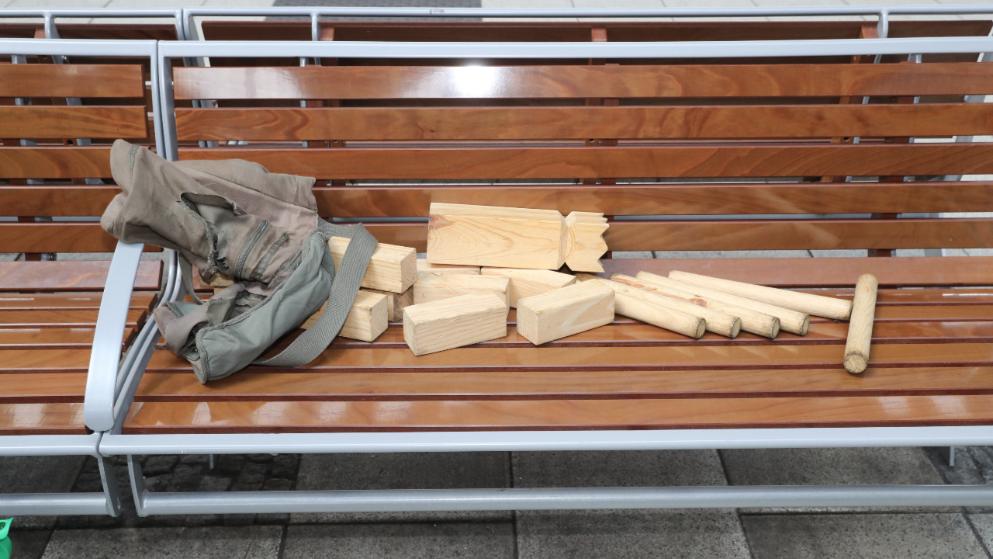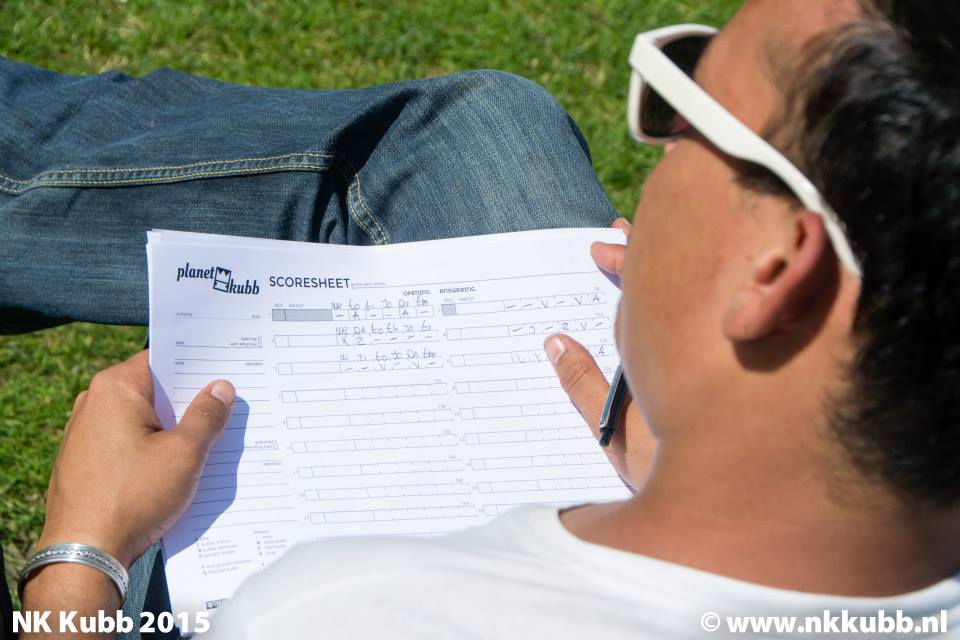
In my book ‘Rebuilding Blocks’ I compare the relationship between the Inkastare and the First Blaster as the relationship between the pitcher and catcher in baseball. In kubb, as in baseball, communication between these roles is integral for success. The tighter the Inkastare throws – and the fewer options they leave for the defenders – the more field kubbs the First Blaster can topple with a single baton. The more field kubbs toppled with the first baton – the more progress that can be made on the baseline. This metric – First Baton Efficiency, the percentage of field kubbs toppled with the first baton – is a measure of how well the Inkastare and the First Blaster work together.
At the 2015 U.S. National Kubb Championship we at Planet Kubb wanted to see which of the eight teams playing on Sunday had the highest 1BE – and if this statistic could be quickly calculated for eight teams in real-time.
I’d like to thank Jim Bernard, Jesse Fraim, Brian Ramsey for helping me record every kubb inkast and every baton thrown in the Quarter Final round. As I received the scoresheets, I quickly added up the Is and the Fs, double checking and triple checking the math. At the beginning of Sunday’s award program, I presented the traveling Nyland Sack Trophy to Kubbitz for a 47.12% 1BE. Yes, that means they toppled slightly less than 50% of the available field kubbs with the first baton. Wow.
But remember, this is the Quarterfinals at the U.S. Nationals.
1. Kubbitz – 47.12% (41f/87i)
2. Furor Celtica – 45.71% (16f/35i)
3. Ringers – 45.45% (30f/66i)
4. Kubbsicles – 44.12% (15f/34i)
5. Damage – 42.86% (15f/35i)
6. X-Kubbed – 40.9% (36f/88i)
7. Ona Orth – 38.71% (24f/62i)
8. King Pin – 37.93% (11f/29i)
Yes, just 9.2% separated these eight teams’ performances with their first baton, 3% separate the top 4. That’s far tighter than I was anticipating. Here’s where I think the 1BE metric is really interesting – Kubbitz finished 1.41% ahead of Furor Celtica but did so by inkasting and toppling 2.5x the field kubbs. Kubbitz & X-Kubbed had more kubbs inkast in game 1 (and then again in game 2) than Furor Celtica and Kubbsicles had in their entire match.
Congrats again to Kubbitz for consistently making progress with the first baton across 3 long games.
And yes, we’re now taking suggestions for the kubb statistic Planet Kubb should highlight at the 2016 U.S. National Kubb Championship.
Special thanks to Dobbie for reviewing game state a few days later and highlighting where clarifications and corrections were needed to more clearly communicate the play.




